
Isekai (異世界) has become a word many people involved in the subculture in the West —whether they’re fans of anime, manga, or light novels— have seen more and more frequently. The term is gaining traction especially now. You can find the term either in the titles of certain anime and manga or, more commonly so, in the title of a light novel.
The works that put into play this concept are usually characterized for presenting a story where characters are thrown into a different world. It is a world that differs vastly from the one we know; it has a different culture, different language, different laws, and a different history. Details can vary from author to author and each work can exist under various subgenres. But no matter what, isekai only has one rule: there needs to be an alternate or different world.
The principal cause for the extensive use of the word in Japan is intricately connected with the success of the narou boom. For those of you who don’t know what that is, Shousetsuka ni Narou (小説家になろう), narou for short, is a deviantART-like website dedicated to writers who publish web novels and short stories. It’s focused on all kind of genres (even +18) and is meant to be for all types of readers. But the direction of the site has changed as the popularity of Isekai novels saw growth around the year 2008, reaching its peak in 2011 and still continuing to this day.
Other sites such as Kakuyomu (カクヨム) have a similar operational pattern, although this one is more focused on other type of genresand it’s owned by Kadokawa. So it’s common to see titles from the site being published on Kadokawa BOOKS, the imprint dedicated to publish works from the site.
Entertainment companies in Japan — Alfapolis, Kodansha, and of course, Kadokawa, to name a few — have started to officially publish works from these sites. They even created various cross-marketing campaigns for some of them, KonoSuba and Re:Zero currently two of the most successful. The participation of these companies in this further contributed to the sites’ popularity, and now they have become a bastion for a number of light novel imprints to acquire works from.
Within the Isekai genre exists three basic subgenres:
- Evocation (Summoning) type (召喚, shoukan)
Works categorized under this subgenre are characterized for involving a plot in which the protagonist is evoked or summoned into a different world by someone. They subsequently act as a hero there. No Game, No Life is one of the recent successful works from the sub-genre and 異世界の勇士 (Isekai no Yuushi, 1981) is considered to be the starting point for it in contemporary literature.
- Transference type (転移, teni)
The protagonist is transferred to a different world by varying methods and reasons. They learn about the culture and history of the place as the story moves forward. Some common methods of transference involve either being covered in a ray of light or crossing through a mirror. Edgar Rice Burroughs’ Barsoom series is considered by Japanese fans to be the foundation for this subgenre.
- Reincarnation type (転生, tensei)
The protagonist passes away either by an accident or a different reason, resulting in them being reincarnated into a different world. They usually preserve their memories and are able to make use of diverse supernatural abilities. There are cases where the protagonist starts over as either a baby, an animal, object, or a human preserving their age before they passed away. This is currently the most popular subgenre as it gives the reader the opportunity to see how a protagonist begins a new life — a theme that can attract a certain demographic within the young Japanese readership. Stories in this subgenre tend to, but not always, involve a jobless protagonist with an inferiority complex and their reincarnation gives them the opportunity to overcome it and lead a new life.
As you can see, there is a wide arrange of material for amateur authors to munch on. These subgenres also tend to be mixed with other genres such as school settings, romcoms, or drama. This is directly related to one of the main reasons why the Isekai genre has seen such growth in the past years: the flexibility it offers aspiring authors to craft a story. Sites such as Narou or Kakuyomu offer them the freedom to do this and even let them leap into the industry.
But this has also allowed for a massive proliferation of works under the genre. More often than not, many works end up being subpar and of low quality. All types of writers exist in this genre: some of them write for the sake of passion, others aim to become professionals, and there are those who don’t know why they are writing. But what is certain is that the Isekai genre has become an alternate trampoline for aspiring amateur writers, at least in modern subculture.
Tappei Nagatsuki, Re:Zero’s author, is one writer who, with passion and perseverance, can achieve things that perhaps you once would have thought impossible — like having your series adapted into anime or, even more, becoming the talk of town not only in Japan but on an international level. Even though LN-to-anime adaptations are nowadays common, authors and editors know they are a huge deal. This passion — independently of what I think about the work itself — is reflected in how the author still offers a considerable portion of the work for free on a website, despite being published on an official label (although he hasn’t released a chapter for more than 6 months).

As for other works that have gained my admiration, there is Babel, one of the latest narou works to be published under an official label. This work is an unfailing proof that showcases what the Isekai genre is capable of when it’s fully exploited. It tells the story of Shizuku, a university girl that journeys into another world. Upon her arrival, she’s enthralled by the idea that she can speak Japanese to the folks from the land without impediments. However, she can’t read or write in the local tongue. The same applies for the natives with the written Japanese language. This intrigues her and leads her into researching about the culture and history of the continent where the story takes place.
It’s a fascinating tale about how language works not only as a gate into knowledge but also as a learning tool. Language is a bridge among cultures and people, a catalyst for encounters, and a bridge connecting totally different worlds. A bridge that knows no frontiers. This is the power of communication.
Definition
We have discussed its connotations in modern day and its subgenres, but we now need to look into the word, what it means, and how Western and Eastern fiction have influenced it.
The word itself, which can also be written as 異界 (ikai), denotes a completely different or even parallel world to the one we know. Parallel worlds tend to be written as heikou sekai (平行世界) in Japanese, but there is also a considerable sum of readers who see it as a rather interchangeable term. It is also connected to death and can be used as a metaphor to indicate when someone has passed away. The afterlife. There are some folklore and mythological interpretation going on.
What is clear is that Isekai is by no means a genre exclusive to Japanese or Eastern fiction. The genre has been around in the West for a large period of time under other names. Fantasy examples include the Barsoom series, or Stranger in a Strange Land (I almost feel as if this was a translation from Japanese to English). But there are what we would call literary works that fall under this genre too: Alice in Wonderland, The Divine Comedy, Chronicles of Narnia, Myth of Gilgamesh, Wizard of Oz, The Odyssey, and Peter Pan are all beloved classics that can be called Isekai. If there is a “translation” for Isekai in Western terms, we would go with fantasy. Its two main subgenres, High Fantasy and Low Fantasy, play an important role in defining what it means.
English Wikipedia defines High Fantasy as this:
A fantasy set in an alternative, fictional (“secondary”) world, rather than “the real”, or “primary” world. The secondary world is usually internally consistent, but its rules differ from those of the primary world.
As long as a story takes places in a different world to the one we know, it can be called High Fantasy. It must be a completely different place. Lord of the Rings and Beowulf are classic examples of this subgenre.
Low Fantasy can therefore be interpreted as a story in a world familiar to our world or even set in our world itself, but it includes fantasy elements and readers often learn about new cultures. Harry Potter can be categorized under this subgenre.
We can also see this function in Japanese literature too. Butaiha (舞台派) are stories that put first and foremost the place so this can be seen as High Fantasy; juukouha (重厚派) are stories which value the explanations of cultures, fantasy elements, and history of the place so it resembles Low Fantasy here.
But these terms are used by a number of readers. They usually are written in Japanese as-is: ハイ・ファンタジー (High Fantasy) and ロー・ファンタジー (Low Fantasy).
To conclude this section, we can say that:
- Isekai (異世界) = High Fantasy
- Real world with fantasy elements (現実世界) = Low Fantasy
Of course, in modern day both Western and Eastern fiction have their own set of sub-genres — Medieval Fantasy, Arthurian Fantasy, Epic Fantasy, etc. the list goes on.
Re:Zero and Zero no Tsukaima can be considered High Fantasy in the West; whereas in Japan, they fall under the transference and summoning type subgenres. But they belong to one umbrella genre: fantasy. It’s also worth mentioning: even though some works may not use the Isekai concept, it can still be called fantasy depending on its elements. But it cannot be High Fantasy according to our definitions.
Background and History in Japan
The genre, even if it was not formally called Isekai back then, has been around for around 200 years. Maybe more. The concept of a protagonist in a different, mystical world is an ancient theme after all.
As a curious fact, one author who will go down in history as an influential writer is without any doubt Haruka Takachiho(高千穂遙). He is not only considered to be one of the pioneers of the modern Isekai genre, but also the very first Japanese author to write a genuine space opera novel.
The following table shows titles that have played an important role on its history and/or have influenced the genre in some way or another, be it by their media adaptations, or their popularity.
|
Year |
Categorization | Title | Author | Label |
Remarks |
||||||||||||||||||||||||||||||||||||||||||||||||||||||||||||||||||||
| 1822 | Transference | Senkyou Ibun (仙境異聞) | 
|
Hirata Atsutane – 平田篤胤 |
* |
A formal study of the “other world,” based on the fictitious gods Hirata, a key theologian of Shinto religion in Edo period, used to believe in. | |||||||||||||||||||||||||||||||||||||||||||||||||||||||||||||||||||
| 1887 | Transference | Ikyoubibouroku (異境備忘録) | 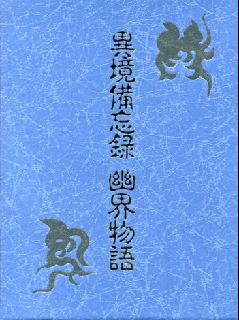
|
Suii Miyachi – 宮地水位 |
* |
A personal record of the author’s journey through mystical worlds. | |||||||||||||||||||||||||||||||||||||||||||||||||||||||||||||||||||
| 1910 | Transference | Toonomonogatari (遠野物語) | 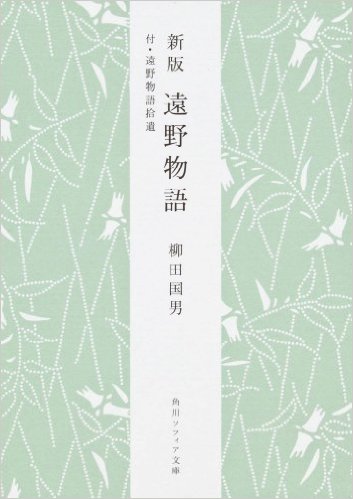
|
Kunio Yanagita – 柳田 國男 |
* |
Various short stories taking place in the city of Toono, Iwate Prefecture paralleling to a mythical world and several legends from Japan. Considered one of the first works on Folkloristics. | |||||||||||||||||||||||||||||||||||||||||||||||||||||||||||||||||||
| 1979, Feb | Evocation | Isekai no Yuushi (異世界の勇士) | 
|
Haruka Takachiho – 高千穂遙 | Tsurushobou (鶴書房) | A high school student is evoked into a different world and brandishes a legendary sword as he tries to save a princess from spirits and demons. The starting point of the genre in modern times. | |||||||||||||||||||||||||||||||||||||||||||||||||||||||||||||||||||
| 1984, Jan | Evocation | The Wings of Rean (リーンの翼) | 
|
Yoshiyuki Tomino – 富野由悠季 | Kadokawa Novels (カドカワノベルズ) | Tells the story of a young soldier who is summoned into Yoshiyuki’s famous fictional world “Byston Well.” | |||||||||||||||||||||||||||||||||||||||||||||||||||||||||||||||||||
| 1985, May | Evocation | Leda: The Fantastic Adventure of Yohko (幻夢戦記レダ) | 
|
Hideyuki Kikuchi – 菊池秀行 | Kodansha X Bunko (講談社X文庫) | Yohko is a girl evoked into the fictional world of Ashanti. This media mix work popularized the so-called “bikini armor” across several mediums. | |||||||||||||||||||||||||||||||||||||||||||||||||||||||||||||||||||
| 1986, Jul | Transference | Crayon Kingdom (クレヨン王国) | 
|
Reizou Fukunaga – 福永令三 | Kodansha’s Aoitori Bunko (青い鳥文庫) | A boy and a girl journey into the peculiar world of Crayon. A work read by adults and children alike. | |||||||||||||||||||||||||||||||||||||||||||||||||||||||||||||||||||
| 1987, Jun | Transference | Alice Series (アリスシリーズ) | 
|
Ryou Nakahara – 中原涼 | Kodansha X Bunko Teens Heart (講談社X文庫ティーンズハート) | Depicts the voyage through Wonderland. It rose to popularity due to its anime adaptation on NHK “Alice SOS.” | |||||||||||||||||||||||||||||||||||||||||||||||||||||||||||||||||||
| 1988, Mar | Evocation | Ijigen Kishi Kazuma (異次元騎士カズマ) | 
|
Shizuka Ouryouji – 王領寺静 | Kadokawa Sneaker Bunko (角川スニーカー文庫) | Protagonist is summoned into a medieval world after a big earthquake. Still has a fanbase. | |||||||||||||||||||||||||||||||||||||||||||||||||||||||||||||||||||
| 1991, Aug | Evocation | NG Knight Ramune & 40 Series (NG騎士ラムネ&40) | 
|
Satoru Akahori – あかほりさとる | Kadokawa Sneaker Bunko (角川スニーカー文庫) | Media mix project. 10-year-old kid, Lamune, clears the Famicom game “King Sccasher” and is evoked into the Arara Kingdom. | |||||||||||||||||||||||||||||||||||||||||||||||||||||||||||||||||||
| 1991, Sep | Evocation | The Twelve Kingdoms (十二国記) | 
|
Fuyumi Ono – 小野不由美 | Kodansha X Bunko, others. (講談社X文庫) | Fuyumi’s most representative work. Nakajima Youko is forced to enter a world with little help and learns to fend for herself. | |||||||||||||||||||||||||||||||||||||||||||||||||||||||||||||||||||
| 1993, Mar | Evocation | Higaeri Quest (日帰りクエスト) | 
|
Hajime Kanzaka – 神坂一 | Kadokawa Sneaker Bunko (角川スニーカー文庫) | Eri, a female high school student is evoked into a different world by a sorcerer. | |||||||||||||||||||||||||||||||||||||||||||||||||||||||||||||||||||
| 1993, Oct | Transference | Equus (エクウス) | 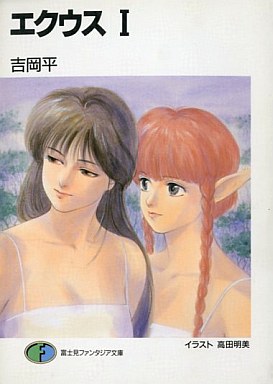
|
Hitoshi Yoshioka – 吉岡平 | Fujimi Fantasia Bunko (富士見ファンタジア文庫) | Manami, the protagonist, travels to a different world alongside her beloved horse. | |||||||||||||||||||||||||||||||||||||||||||||||||||||||||||||||||||
| 1996, Feb | Transference | El-Hazard (神秘の世界エルハザード) | 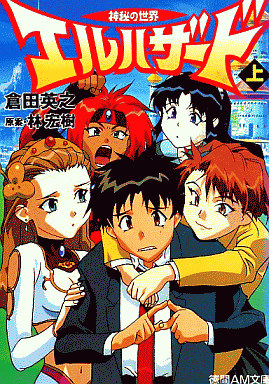
|
Hideyuki Kurata & Others – 倉田英之 | Tokuma AM Bunko (徳間AM文庫) | Depicts the story of a group of boys who travel over ten thousand years and arrive to the mystical world of “El-Hazard”. Considered a masterpiece. | |||||||||||||||||||||||||||||||||||||||||||||||||||||||||||||||||||
| 1997, Apr | Transference | A Little Dragon (ア・リトル・ドラゴン) | 
|
Usagi Nakamura – 中村うさぎ | Dengeki Bunko (電撃文庫) | A young female elf and her dragon protect the gate between the earthly world and theirs while having their own adventures. | |||||||||||||||||||||||||||||||||||||||||||||||||||||||||||||||||||
| 1998, Jul | Evocation | Those Who Hunt Elves (エルフを狩るモノたち) | 
|
Masaharu Amiya – あみやまさはる | Dengeki Bunko (電撃文庫) | The protagonist has to undress female elves in order to return home. Its anime adaptation marked a “before and after” for late night anime. | |||||||||||||||||||||||||||||||||||||||||||||||||||||||||||||||||||
| 2000, Dec | Transference | Kyo Kara Maoh! (㋮シリーズ) | 
|
Tomo Takabayashi – 喬林知 | Kadokawa Beans Bunko (角川ビーンズ文庫) | A high school student journeys into the kingdom of Shinmakoku from his bathroom and becomes the Witch-King. A women-oriented franchise with comedic elements. | |||||||||||||||||||||||||||||||||||||||||||||||||||||||||||||||||||
| 2001, Nov | Evocation | A-kun (17) no Sensou (A君(17)の戦争) | 
|
Daisuke Gouya – 豪屋大介 | Fujimi Fantasia Bunko (富士見ファンタジア文庫) | A slightly chubby boy is evoked into a different world by a group of girls to become the next Witch-King and save it from its imminent collapse. | |||||||||||||||||||||||||||||||||||||||||||||||||||||||||||||||||||
| 2004, Jun | Evocation | Zero no Tsukaima (ゼロの使い魔) | 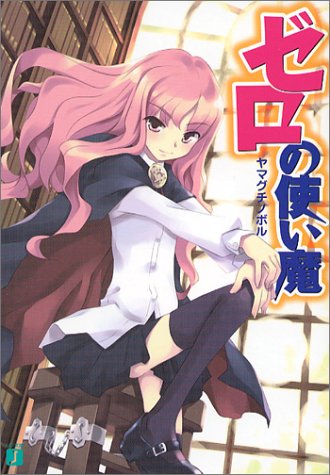
|
Noboru Yamaguchi – ヤマグチノボル | MF Bunko J (MF文庫J) | Its charming characters and peculiar worldbuilding attracted the readers. Considered a masterpiece, it was one of the works that became a major pillar for MF Bunko in its initial stages. | |||||||||||||||||||||||||||||||||||||||||||||||||||||||||||||||||||
| 2005, Aug | Transference | Secret Girl (円環少女) | 
|
Satoshi Hase – 長谷敏司 | Kadokawa Sneaker Bunko (角川スニーカー文庫) | The protagonist, Jin, and a magician girl, Maisel, fight to preserve stability day and night as a group of wanted sorcerers come from another world to unleash mayhem. | |||||||||||||||||||||||||||||||||||||||||||||||||||||||||||||||||||
| 2006, Jul | Transference | Kyuu kyuu kyuuto! (きゅーきゅーキュート!) | 
|
Kenji Nojima – 野島けんじ | MF Bunko J (MF文庫J) | Protagonist encounters with a princess from another world, and gets dragged into it. | |||||||||||||||||||||||||||||||||||||||||||||||||||||||||||||||||||
| 2006, Nov | Evocation | Otome wa Ryuu wo michibiku! (乙女は龍を導く!) | 
|
Youko Enoki – 榎木洋子 | Cobalt Bunko (コバルト文庫) | A strong-willed girl is taken all of sudden into a different world. | |||||||||||||||||||||||||||||||||||||||||||||||||||||||||||||||||||
| 2007, Jul | Evocation | Rasen no Kuni no 3 Drill (螺旋の国の3ドリル) | 
|
Hiroshi Tominaga – 富永浩史 | Hobby Japan Bunko (HJ文庫) | Protagonist finds himself in an earthquake and drills his way down to the core of Earth. He arrives into a different world. | |||||||||||||||||||||||||||||||||||||||||||||||||||||||||||||||||||
| 2008, Aug | Evocation | Himepara (H+P-ひめぱら-) | 
|
Meguru Kazami – 風見周 | Fujimi Fantasia Bunko (富士見ファンタジア文庫) | A boy is evoked into a different world by five princesses. They want him to become their heir. | |||||||||||||||||||||||||||||||||||||||||||||||||||||||||||||||||||
| 2009, Jan | Transference | Is This a Zombie? (これはゾンビですか?) | 
|
Shinichi Kimura – 木村心一 | Fujimi Fantasia Bunko (富士見ファンタジア文庫) | Chaos is the only word that can describe this LN best. | |||||||||||||||||||||||||||||||||||||||||||||||||||||||||||||||||||
| 2009, Feb | Transference | Maousanchi no Yuusha-sama (魔王さんちの勇者さま) | 
|
Hamubane – はむばね | Tokuma Dual Bunko (徳間デュアル文庫) | The protagonist, who is sent to an alternate world to fight the Witch-King, ends up settling the dispute. | |||||||||||||||||||||||||||||||||||||||||||||||||||||||||||||||||||
| 2010, Apr | Transference | Gate (自衛隊彼の地にて斯く戦えり) | 
|
Takumi Yanai – 柳内たくみ | AlphaPolis (アルファポリス) | Creatures from another world clash with the JSDF. Makes use of modern weaponry. | |||||||||||||||||||||||||||||||||||||||||||||||||||||||||||||||||||
| 2010, May | Transference | Aesthetica of a Rogue Hero (はぐれ勇者の鬼畜美学) | 
|
Tetsuto Uesu – 上栖綴人 | Hobby Japan Bunko (HJ文庫) | The story of a boy after he defeated the Witch-King in an alternate world. | |||||||||||||||||||||||||||||||||||||||||||||||||||||||||||||||||||
| 2010, Nov | Reincarnation | Reset (リセット) | 
|
Yusura Kisaragi – 如月ゆすら | Regina Books (レジーナブックス) | A modern take on reincarnation. One of the very first narou works to be published in tankoubon format. | |||||||||||||||||||||||||||||||||||||||||||||||||||||||||||||||||||
| 2011, Feb | Transference | The Devil Is a Part-Timer! (はたらく魔王さま!) | 
|
Satoshi Wagahara – 和ヶ原 聡司 | Dengeki Bunko (電撃文庫) | The devil arrives to modern Japan from an alternate world and has to work to get by. 2011 marks the beginning of the exponential Isekai boom. | |||||||||||||||||||||||||||||||||||||||||||||||||||||||||||||||||||
| 2011, Mar | Transference | Log Horizon (ログ・ホライズン) | 
|
Mamare Touno – 橙乃ままれ | Enterbrain (エンターブレイン) | Characters see themselves trapped inside an online game and they use Akiba as bastion as they try to change the world. | |||||||||||||||||||||||||||||||||||||||||||||||||||||||||||||||||||
| 2011, Apr | Evocation | Problem Children Are Coming From Another World, Aren’t They? (問題児シリーズ) | 
|
Tarou Tatsunoko – 竜ノ湖 太郎 | Kadokawa Sneaker Bunko (角川スニーカー文庫) | Three main characters, coping with reality due to their superpowers, are evoked into an alternate world after receiving an envelope. | |||||||||||||||||||||||||||||||||||||||||||||||||||||||||||||||||||
| 2011, Dec | Transference | Outbreak Company (アウトブレイク・カンパニー 萌える侵略者) | 
|
Ichirou Sakaki – 榊一郎 | Kodansha Ranobe Bunko (講談社ラノベ文庫) | The protagonist journeys into an alternate world. His objective is to spread the love for otaku culture. | |||||||||||||||||||||||||||||||||||||||||||||||||||||||||||||||||||
| 2012, Jan | Evocation | Kono ie no Yuusha-sama, moshiku wa Kyuuseishu-sama wa irasshaimasenka?! (この家に勇者様もしくは救世主さまはいらっしゃいませんか?!) | 
|
Tsukasa Kawaguchi – 川口士 | Ichijinsha Bunko (一迅社文庫) | Several girls summon the protagonist into their world to aid them to save it. | |||||||||||||||||||||||||||||||||||||||||||||||||||||||||||||||||||
| 2012, Apr | Evocation | No Game, No Life (ノーゲーム・ノーライフ) | 
|
Yuu Kamiya – 榎宮祐 | MF Bunko J (MF文庫J) | A pair of siblings are evoked into a world where every matter is decided by playing video games. Notable too for having a Japanese-Brazilian writer. | |||||||||||||||||||||||||||||||||||||||||||||||||||||||||||||||||||
| 2012, Apr | Transference | SKYWORLD (スカイ・ワールド) | 
|
Tsukasa Seo – 瀬尾つかさ | Fujimi Fantasia Bunko (富士見ファンタジア文庫) | Protagonist journeys into an online RPG-like world and looks for a way to get home while aiming for the top. | |||||||||||||||||||||||||||||||||||||||||||||||||||||||||||||||||||
| 2012, Jul | Transference | Overlord (オーバーロード) | 
|
Kugane Maruyama – 丸山くがね | Enterbrain (エンターブレイン) | Protagonist is trapped inside an online RPG-like world as he unravels what’s going on. | |||||||||||||||||||||||||||||||||||||||||||||||||||||||||||||||||||
| 2012, Sep | Evocation | Risou no Himo Seikatsu (理想のヒモ生活) | 
|
Tsunehiko Watanabe – 渡辺恒彦 | Hero Bunko (ヒーロー文庫) | First work to be published from the just-launched (at the time) Hero Bunko. Brought over from Narou. | |||||||||||||||||||||||||||||||||||||||||||||||||||||||||||||||||||
| 2013, Jan | Reincarnation | Nights & Magic (ナイツ&マジック) | 
|
Nohisago Amazake – 天酒之瓢 | Hero Bunko (ヒーロー文庫) | A mecha otaku reincarnates in an alternate world where robots are driven by magic. Anime adaptation in the works. | |||||||||||||||||||||||||||||||||||||||||||||||||||||||||||||||||||
| 2013, May | Reincarnation | Next Life (ネクストライフ) | 
|
Jin Aino – 相野仁 | Hero Bunko (ヒーロー文庫) | Protagonist is killed by an avalanche and reincarnates in a world very similar to an online game. | |||||||||||||||||||||||||||||||||||||||||||||||||||||||||||||||||||
| 2013, Jun | Transference | Grimgar of Fantasy and Ash (灰と幻想のグリムガル) | 
|
Ao Juumonji – 十文字青 | Overlap Bunko (オーバーラップ文庫) | A group of companions journey into a world very similar to a game. A fight for survival begins. | |||||||||||||||||||||||||||||||||||||||||||||||||||||||||||||||||||
| 2013, Aug | Reincarnation | Yomikake Tensei Ryoushu no Kaikaku (読みかけ転生領主の改革) | 
|
Hisumi – 氷純 | MF Books (MFブックス) | Protagonist aims to reform the land where he is reincarnated into. First work to be published by MF Books at the time. Brought over from Narou. | |||||||||||||||||||||||||||||||||||||||||||||||||||||||||||||||||||
| 2013, Aug | Transference | Meguru Linker (巡ル結魂者) | 
|
Yoshinobu Akita – 秋田禎信 | Kodansha Ranobe Bunko (講談社ラノベ文庫) | Protagonist is sent into a different world. Known for its ensemble cast and vivid personality of the heroines. | |||||||||||||||||||||||||||||||||||||||||||||||||||||||||||||||||||
| 2013, Oct | Reincarnation | Youjo Senki (幼女戦記) | 
|
Carlo Zen – カルロ・ゼン | Enterbrain (エンターブレイン) | Guy reincarnates into a young girl in a different world. Ends up in a position where he grasps both militaristic and political power. | |||||||||||||||||||||||||||||||||||||||||||||||||||||||||||||||||||
| 2013, Oct | Transference | Neet dakedo Hello Work ni Ittara Isekai ni tsurete ikareta (ニートだけどハロワにいったら異世界につれてかれた) | 
|
Kasuga Katsura – 桂かすが | MF Books (MFブックス) | Masaru, a 23-year-old NEET heads to Hello Work to get a job, ends up being sent to an alternate world since it was stipulated on the contract he signed. | |||||||||||||||||||||||||||||||||||||||||||||||||||||||||||||||||||
| 2013, Oct | Reincarnation | KonoSuba: God’s Blessing on This Wonderful World! (この素晴らしい世界に祝福を!) | 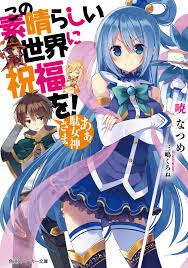
|
Natsume Akatsuki – 暁なつめ | Kadokawa Sneaker Bunko (角川スニーカー文庫) | Kazuma, a shut-in teenager, dies on a traffic accident and reincarnates into a RPG-like world. He, along with a silly “goddess” and crew, have to defeat the Witch-King. | |||||||||||||||||||||||||||||||||||||||||||||||||||||||||||||||||||
| 2014, Jan | Reincarnation | Mushoku Tensei: Isekai Ittara Honki Dasu (無職転生異世界いったら本気だす) | 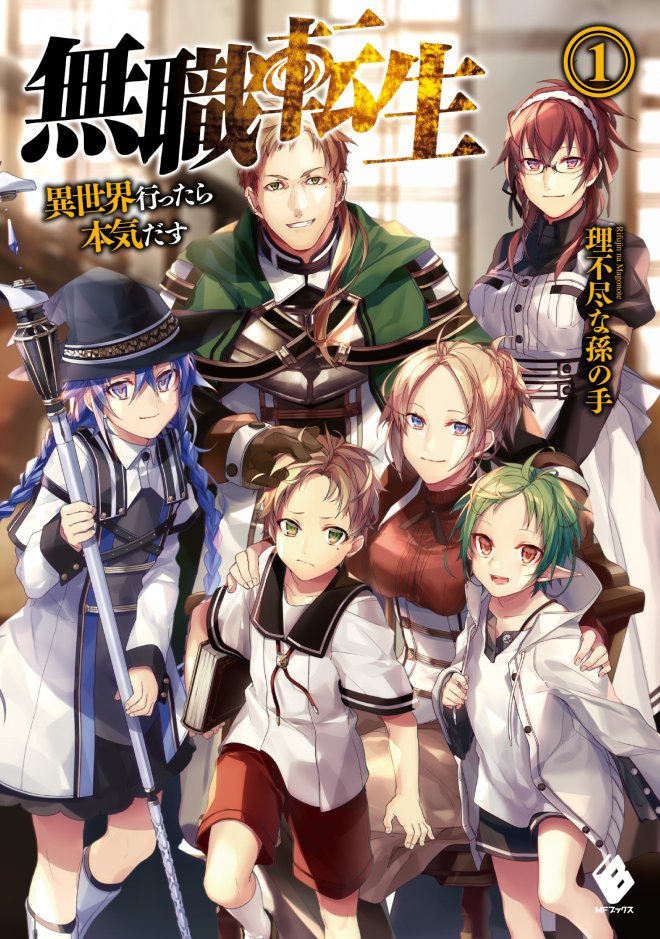
|
Rifujin na Magonote – 理不尽な孫の手 | MF Books (MFブックス) | Considered the best reincarnation work so far and a masterpiece by avid narou fans. Anime adaptation predicted in near future. | |||||||||||||||||||||||||||||||||||||||||||||||||||||||||||||||||||
| 2014, Jan | Transference | Sate, Isekai wo kouryaku shiyouka (さて、異世界を攻略しようか。) | 
|
Noboru Ozakaki – おかざき登 | MF Bunko J (MF文庫J) | Protagonist and his little sister must clear the quests of the world they were sent into to return home. | |||||||||||||||||||||||||||||||||||||||||||||||||||||||||||||||||||
| 2014, Jan | Transference | Re:Zero Starting Life in Another World (Re:ゼロから始める異世界生活) | 
|
Tappei Nagatsuki/Nezumiironeko (長月達平/鼠色猫) | MF Bunko J (MF文庫J) | Sales hit in anime and LN. Protagonist is in a loop to save a girl in a RPG-like setting. Wildly popular in being perceived as the “deconstruction” of isekai novels by the West, despite being a typical entry. Japanese fans are weirded out by Western fans’ love for it. | |||||||||||||||||||||||||||||||||||||||||||||||||||||||||||||||||||
| 2014, May | Evocation | Sword Dragon Sword (ード・ドラゴン・ソード) | 
|
Midori Natsu – 夏緑 | Hobby Japan Bunko (HJ文庫) | The story of a boy evoked by a group of girls to serve as the Messiah in a world threatened by a dark dragon. Recommended to anyone who wants to get into Isekai works. | |||||||||||||||||||||||||||||||||||||||||||||||||||||||||||||||||||
| 2014, May | Transference | The disemployment brave! (大英雄が無職で何が悪い) | 
|
Ao Juumonji – 十文字青 | Overlap Bunko (オーバーラップ文庫) | A narou work that takes place in the same world as Grimgar. Originally from Narou, it is now published in bunko format. | |||||||||||||||||||||||||||||||||||||||||||||||||||||||||||||||||||
| 2014, Jun | Transference | Kenja no Deshi wo nanoru Kenja (賢者の弟子を名乗る賢者) | 
|
Ryuusenhirotsugu – りゅうせんひろつぐ | CG (Got A Chance) Novels (GCノベルズ) | Kagami, a veteran player, falls asleep while playing a VRMMO game. When he wakes up, he realizes the game has become reality and he has turned into a little girl. | |||||||||||||||||||||||||||||||||||||||||||||||||||||||||||||||||||
| 2014, Jul | Transference | Panties de Hajimaru Sekai Kakumei (パンツではじまる世界革命) | 
|
Youichi Ayano – 綾野陽一 | Ichijinsha Bunko (一迅社文庫 | Panties don’t exist in the world the protagonist journeys into. As a panties lover himself, he faces an economical problem as he tries to develop them. | |||||||||||||||||||||||||||||||||||||||||||||||||||||||||||||||||||
| 2014, Sep | Evocation | Isekai Bengoshi (異世界弁護士) | 
|
Komochi Kina – 季菜こもち | MF Books (MFブックス) | The first original novel (meaning, not taken from Narou) to be published by MF Books. | |||||||||||||||||||||||||||||||||||||||||||||||||||||||||||||||||||
| 2014, Nov | Reincarnation | Nidome no Jinsei wo Isekai de (二度目の人生を異世界で) | 
|
Mine – まいん | Hobby Japan Novels (HJノベルズ) | Protagonists get involved in a number of incidents with a swordswoman and a priestess after reincarnating into an alternating world. Known for its minute portrayal of food and gourmet-like descriptions about it. The first novel to be published from HJ Novels. | |||||||||||||||||||||||||||||||||||||||||||||||||||||||||||||||||||
| 2015, Jan | Reincarnation | Isekai Raou no Tankyusha (異世界ラ皇の探求者) | 
|
You Iriomote – 西表洋 | GA Bunko (GA文庫) | The protagonist, a ramen connoisseur, reincarnates in a world where he aims for the ultimate ramen recipes because there are no rivals. Also uses the opportunity to undress as many girls as possible. | |||||||||||||||||||||||||||||||||||||||||||||||||||||||||||||||||||
| 2015, Oct | Transference | Isekai Shuugaku Ryokou (異世界修学旅行) | 
|
Takuya Okamoto – 岡本タクヤ | Gagaga Bunko (ガガガ文庫) | A groups of students ends up in a different world after a school trip. Protagonist embarks on a journey to find his classmates. | |||||||||||||||||||||||||||||||||||||||||||||||||||||||||||||||||||
| 2015, Nov | Reincarnation | Owari naki Shinka no Hate ni ~Mamonokko to Ayumu Isekai Bouken Kikou (終わりなきの果てに~魔物っ娘と歩む異世界冒険紀行~) | 
|
Yu Awayuki – 淡雪融 | AlphaPolis (アルファポリス) | Touya, the protagonist, dies after a bike accident and reincarnates into an alternate world. He raises a slime, which evolves into a little girl. Story focuses on their adventures. |
The 58 works here listed have influenced in one way or another the genre throughout the years. The more recent ones boast a considerable popularity among their niche fan base, that is. It’s worth noting that not all can be considered light novels because some of the labels are not focused solely on the medium.
Reincarnation is a subgenre “relatively” new when it comes to light novels since it has made its first appearance in 2010. It then starts to exponentially increase and the genre has taken a drastic direction ever since. Entertainment companies saw an opportunity in there, and didn’t miss a chance to exploit it. This translated into more anime and manga adaptations from several light novel titles, not just Isekai ones.
Still, these are only works published from official labels if we don’t count the Isekai novels on Narou to receive a publication in book format yet. Include RPG series like Summon Night and Persona 4 and the number gets higher. Visual novels such as Muv-Luv Alternative also need to be considered. It is estimated that the current number of actual Isekai titles published sits around 640-660, but there is definitely more to that.
Isekai VS VRMMORPG
These used to be considered two separate genres — and well, strictly speaking, they are — but they also are intricately connected. Virtual reality novels most of the time will allude to a different or parallel world to the one we know. Perhaps it is not a physical world, but it provides the sensation of entering a completely different one. Isn’t that, after all, an element of the Isekai genre?
On the other side of the coin, an Isekai novel won’t necessarily always be a VRMMORPG novel. The reason is simple: to provide a VR experience, both hardware and software is necessary. And if the novel doesn’t include those two essential factors, it won’t be a VR novel. But it might still have RPG elements.
Sounds messy, right? It is. That’s precisely why the genre issue when it comes to light novels is usually the hot topic for avid readers and fans.
To put it simply:
- A VR/MMORPG-based light novel can belong — not always, but in most cases — to the Isekai genre.
- Conversely, an Isekai light novel may not belong to the VR/MMORPG genre.
Examples:
- KonoSuba is an Isekai light novel, but it is not a VRMMO one as it doesn’t include any of the elements characteristic of the genre. It does, however, have a few RPG elements.
- Sword Art Online is a light novel that belongs both to the VRMMORPG and Isekai genre as it takes place in a completely different world to ours that is strongly connected to reality (recreated via VR technology). It also involves VR gears and RPG elements
The VRMMORPG genre is not as old as the Isekai one. Its very first appearance in the light novel realm in the first half of the 90s with Criss Cross (1994), a light novel that revolutionized the genre and was a leap forward for one of the mediums that would become one of the major pillars of modern subculture. It came at a time when RPGs and the conception of virtual reality were not yet fixed aspects of pop culture in the West, and were not considered mainstream. Its closest Western cousin is cyberpunk, which is another story altogether. Nevertheless, while Criss Cross was simple in its execution, it would set the bases for what would become .hack and SAO.

In any case, these two genres are now a mix that’s seen often in modern times. They tend to go hand-to-hand now. Some authors use elements of both to create their own stories and try to give the consumer what’s always looking for: new and, if possible, original content.
Seen from another perspective, this is considered just a “phase” or a “trend” from a some Japanese readers. They are sure the bubble might burst. Speculation in the net indicates that senki (戦記, conflict-based novels) could be the next big trend to blow up. But this doesn’t mean the Isekai — or any other genre for that matter — will cease to exist. The “new genre” could be a mix of elements from many genres for all we know.
And honestly, who in the world knows. We live in an age where information is exchanged more than ever and products are manufactured just as quickly as humans consume them.
Humans can run out of energy, money, or luck, but if one thing’s for sure, it’s that they will never run out of ideas.
For a world of possibilities lies out there.
Thank you, Makkusu and Kastel, for this post. There’s so much food for thought, and that list of works is something I’ll certainly reference in the future. You put an amazing amount of work into it.
Book Off’s site naturally emphasizes traditional literary works, but I don’t think RPGs should be treated as an afterthought. Oretsuba touches significantly on this subject. To break it down quickly, that story raises the idea that Dragon Quest, despite not actually being an 異世界もの, inspired those feelings in a generation of Japanese youth via its capacity as a game in which the player is expected to take on the role (literally, using the controller) of the self-insert hero.
And I don’t think you should even separate the isekai genre from the MMO genre, at all. It’s no coincidence that the first mega-hit of the “modern” isekai/VRMMO genre was Sword Art Online’s first volume. SAO is ostensibly about a VRMMO i.e. a mere “game”, but if you read the story, you see that it’s all about the protagonist truly accepting the VRMMO world as a real one where he can live another life–along with fulfilling all the readers’ fantasies of leaving behind their old life and identity, discovering their incredible talent, marrying a beautiful and awesome girl, and so on. (By the way, this plot in many ways echoes Dragon Quest’s.) And the narrative constantly reinforces this. SAO already blended the genres enough, but then works like Log Horizon completely destroyed any attempts to distinguish them.
The isekai/VRMMO setting has only been able to permeate the public consciousness in these recent years which have seen the popularization of social networks/the web, MMORPGS, and smartphones. Now that it has, it’s not going anywhere: it’s the perfect vehicle for readers’ dreams.
LikeLike
Thanks, Makkusu and Kastel, for this post. There’s so much food for thought, and that list of works is something I’ll reference in the future. You put an amazing amount of work into it.
Book Off’s site naturally emphasizes traditional literary works, but I don’t think RPGs should be treated as an afterthought. The visual novel Oretsuba kind of touches on this subject. That story raises the idea that Dragon Quest, despite not actually being an 異世界もの, inspired those feelings in a generation of Japanese youth via its capacity as a game in which the player is expected to take on the role (literally, using the controller) of the self-insert hero.
I don’t think you should even separate the isekai genre from the MMO genre, at all. It’s no coincidence that the first mega-hit of the “modern” isekai/VRMMO genre was Sword Art Online’s first volume. SAO is ostensibly about a VRMMO i.e. a mere “game”, but if you read the story, you see that it’s all about the protagonist truly accepting the VRMMO world as a real one where he can live another life–along with fulfilling all the readers’ fantasies of leaving behind their mundane society, discovering their incredible talent, marrying a beautiful and awesome girl, and so on. (By the way, this plot somewhat echoes Dragon Quest’s.) The narrative constantly focuses on this idea. SAO already blended the genres enough, but then works like Log Horizon completely destroyed any attempts to distinguish them.
The isekai/VRMMO setting has only become able to permeate the public consciousness after a lot of technological change, establishment of relevant tropes in games and such, and the advent of MMORPGs. Now that it has, it’s not going anywhere: it’s the perfect vehicle for readers’ dreams.
I sent another reply earlier but it didn’t show up, so hopefully this doesn’t end up being a double-reply.
LikeLike
I’d like to write/edit a post someday on the huge influence of Dragon Quest and maybe Jojo. I thought of adding it to the post, but that’s just too much to an already large project Makkusu is doing. It’s fascinating how, as you mentioned, DQ can be seen even in isekai and MMORPGs.
LikeLike
WOW. Loved this post. Thank you so much for writing this! I always wanted to read something like Escaflowne’s story but never found any that matched its scope. Hopefully I can find it through this. Also, in Babel, is there romance? Do you have any recs for light novels that aren’t filled with ecchi and are predominant on a story like Spice and Wolf or Sugar Apple Fairy Tale? Thank you!!
LikeLike
Thanks! Glad people still find this post useful or informative.
To answer yor question: yes, there’s a slight romance in Babel, but it’s a bit of a secondary element to series. Nonetheless, it’s probably the most intriguing isekai story I’ve read in a while. It’s not derivative, and the central character –a female uni student– is a relatable girl in such a compelling way you can’t help but root for her. I can wholeheartedly say it’s an isekai LN I’d go out of my way to recommend (which is saying a lot). Two volumes are out on Dengeki atm, which make a few changes on the story and have additional text, but you can try out the original version on Narou to test the waters.
As for other series that fill the bill: two series by 橋本紡, either River’s End, or Hantsuki. He’s the go-to man if you’re looking for feels. A series called アカイロ/ロマンス, which is a bit more darker and gory in tone, but romance is the main theme. A quite unique take on it I’d say.
I’m thinking of other titles, but they contain other elements other than romance, or aren’t as orthodox as the ones you mentioned. I recently finished いぬかみっ!which is pure romance with borderline erotica content, so… yeah.
Anyway, hope it helps. Just keep exploring.
LikeLiked by 1 person
Thank you, Makkusu! Wow, if you really like Babel, then I’ll start with that one. And haha I did read いぬかみっ!a while back. I liked it for what it was ^^
Sorry for being a noob, but you said Babel is on Dengeki. That’s the site, correct? Also, do you know why authors are allowed to post their works online? Perhaps it’s only a sample? Looking through the sites, it seemed that a lot of them had entire novels there. I could be mistaken. Thank you!
LikeLike
Published under the label, not on their site.
LikeLiked by 1 person
Thank you that makes more sense.
LikeLike
[…] invested in these works. The idea that a character is transported into another world is not new. As Makkusu’s classic post on isekai fiction suggests, there are similarities between Western fiction (Alice in Wonderland, Strangers in a […]
LikeLike